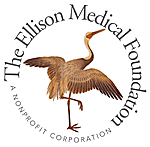
New
Scholar Program
| 1998 New Scholar Awardees |
| 1999 New Scholar Awardees |
Richard L. Sprott, Ph. D.
Executive Director
The Ellison Medical Foundation
4710 Bethesda Avenue
Suite 204
Bethesda, MD 20814
(301) 657-1830 / 2511 (Phone)
(301) 657-1828 (Fax)